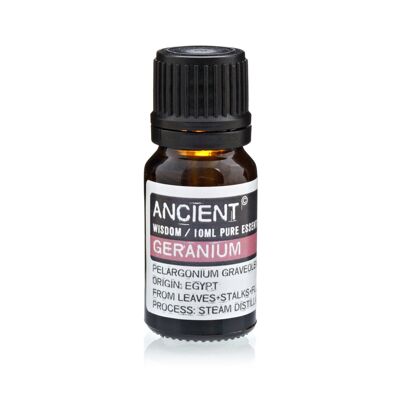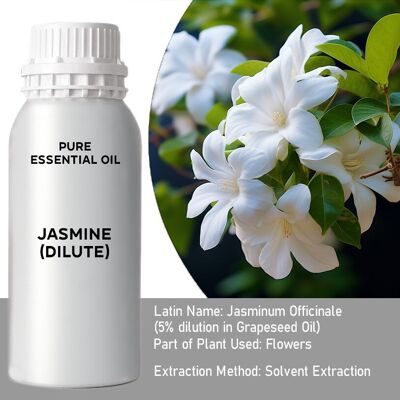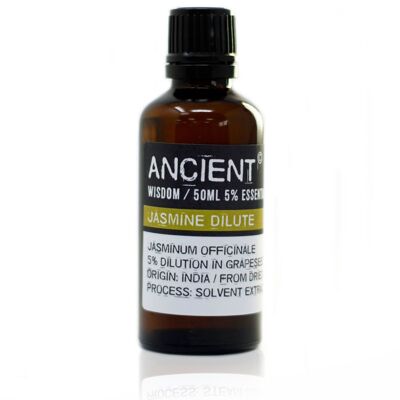


Latin Name: Jasminum OfficinalePart of Plant Used: LeavesOrigin: IndiaExtraction Method: Solvent Extraction5% dilution in Grape Seed OilIt may be the aphrodisiac properties that put jasmine oil in such high demand throughout history. Jasmine essential oil was used in healing and religious ceremonies because of this compelling quality. In China, jasmine oil was used in sick rooms to make the air fragrant, but it was also thought to cleanse the air of pollutants even before the discovery of bacteria. The ancient Egyptians used jasmine oil for headaches, nervous disorders and to promote restful sleep.Today, the essence is produced through a process called solvent extraction. At first glance, jasmine is all about smell. Its complex floral energy is a mood lifter for most people and often provides aphrodisiac qualities. Studies have shown that just the smell of jasmine can increase alertness, hand-eye coordination, boost self-confidence and happiness, and reduce stress.In a therapeutic sense, jasmine can treat dry, aging skin. It is used in low concentrations to treat eczema and dermatitis. Additionally, jasmine is useful for fading scars and treating stretch marks after childbirth. Jasmine can relieve anger, anxiety and stress without acting as a sedative. Jasmine opens one to the options available through clearer thinking. This calming and balancing power can also reduce inflammation from emotional stress.Jasmine has a long history of enhancing libido, releasing inhibitions and inspiring sexual desire. Jasmine has properties that regulate menstrual cycles, can reduce menstrual pain, lethargy and mood swings. It can also delay the onset of menopause.


































